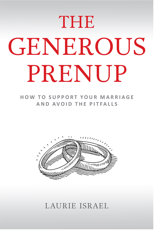From The American Law Institute, Principles of the Law of Family Dissolution: Analysis and Recommendations
When Eugene and Dolores marry, they are both employed with comparable incomes, and have no children. Thirteen years later, they have two children, ages seven and 11. Dolores has been the primary caretaker of the children since their birth, and has no been regularly employed since that time. The younger child has learning disabilities, and Dolores has borne the primary responsibility for closely monitoring the child’s school performance, and for making sure that the child’s school provides the child with appropriate services.
Eugene, who has been employed as a software engineer, has devoted evenings and weekends to developing a new software product, BugFree. He believes he may soon be ready to license BugFree to a major software company, and hopes to realize significant profits. From a friend who was recently divorced, Eugene learned that under the law of his state his wife would have an equal property interest with him in BugFree, were they to divorce. In recent years, he has had doubts about their marriage. Eugene therefore presents Dolores with a marital agreement, drafted by an attorney he has hired, under which Dolores gives up any marital-property claims she otherwise would have to BugFree. Eugene tells Dolores that, if she does not sign this agreement, he will seek an immediate divorce, because he does not feel he can go forward with BugFree’s development and marketing if he does not retain sole ownership of it.
Dolores is stunned to learn that Eugene is considering divorce and at a loss to imagine how she would live and care properly for the children if divorce were to occur. She strongly believes her children’s welfeare would be seriously compromised were she to return full time to work, yet does not see how she and the children could maintain their accustomed life on compensatory payments and child support alone. As the manager of the couple’s household finances, she knows that their current assets are modest. She is also fearful of the impact that divorce and the accompanying disruption would have on the childre. She is not certain whether Eugene’s threat is serious but feels she cannot take the risk. Unhappily and reluctantly, she signs the agreement.
Five years later, Eugene files for divorce. In the meantime, BugFree has been a success, and Eugene’s interest in it worth several million dollars, which would be marital property but for the agreement. The couple’s other marital property is worth less than $100,000. Eugene seeks enforcement of the marital agreement, and thus allocation of the entire value of BugFree to him as his separate property, with the parties’ other property divided equally between Eugene and Dolores.
Because the parties’ circumstances at divorce are not different than was contemplated at the time they made their agreement, Section 7.05 is unlikely to present any bar to its enforcement. The contract doctrine of unconscionability, however, is applicable. Dolores, in reliance upon the marriage, had left her employment and made herself financially dependent upon Eugene, so that their potential divorce was a much greater threat to her welfare than to his. In addition, Eugene’s threat was effective in part because it exploited Dolores’s responsible concern for the welfare of their children. Under the circumstances present here, Eugene’s threat to divorce Dolores if she did not sign, as a tactic to obtain her consent to a very one-sided agreement that denied Dolores any claim at all on the fruits of Eugene’s marital labor in BugFree, renders the agreement unconscionable, and thus unenforceable.
Source: Chp 7. Agreements. pp 949.
Learn more about postnuptial agreements.
